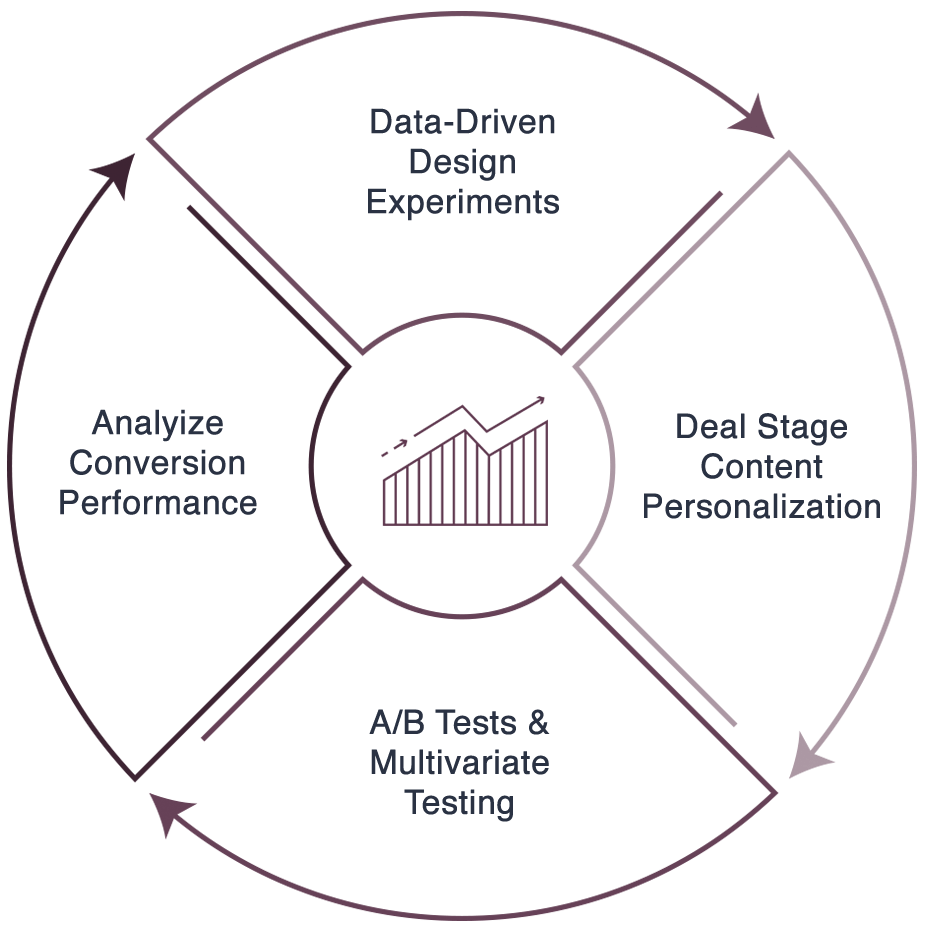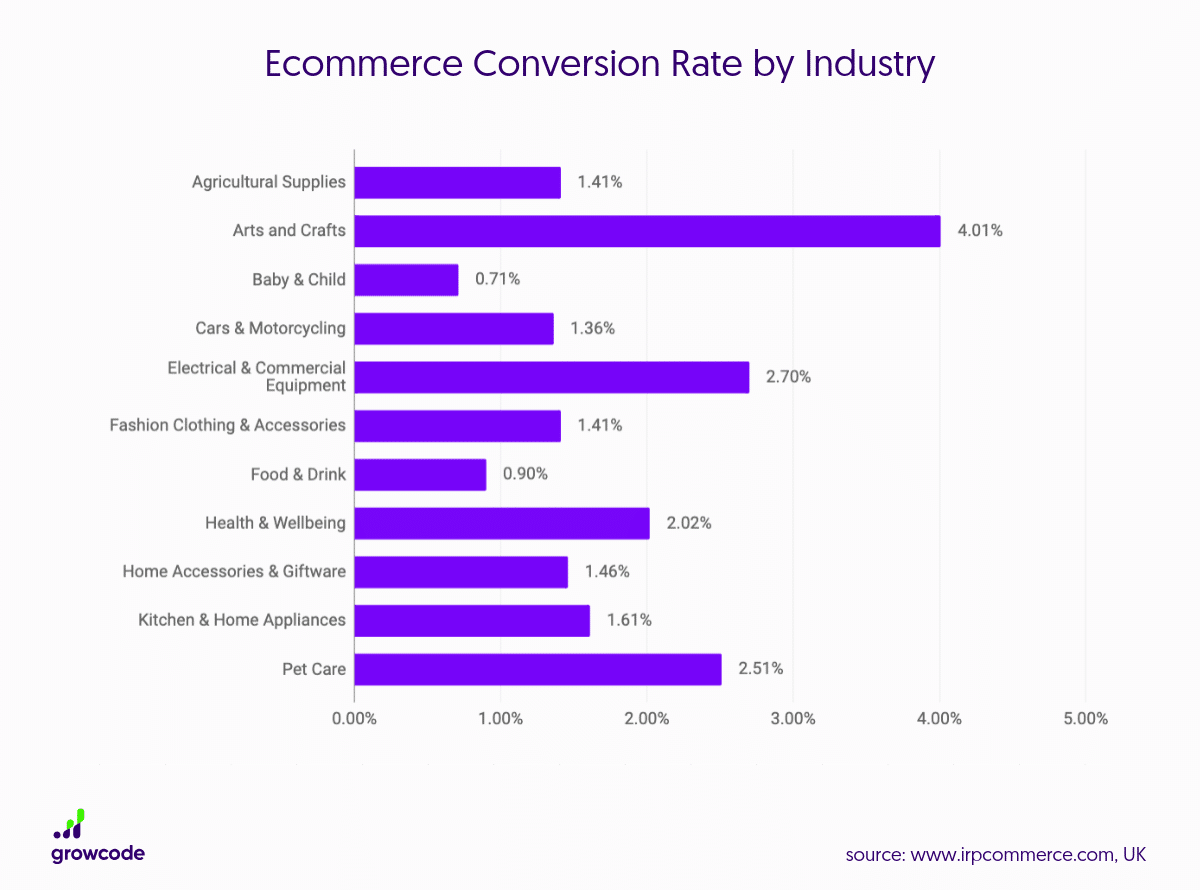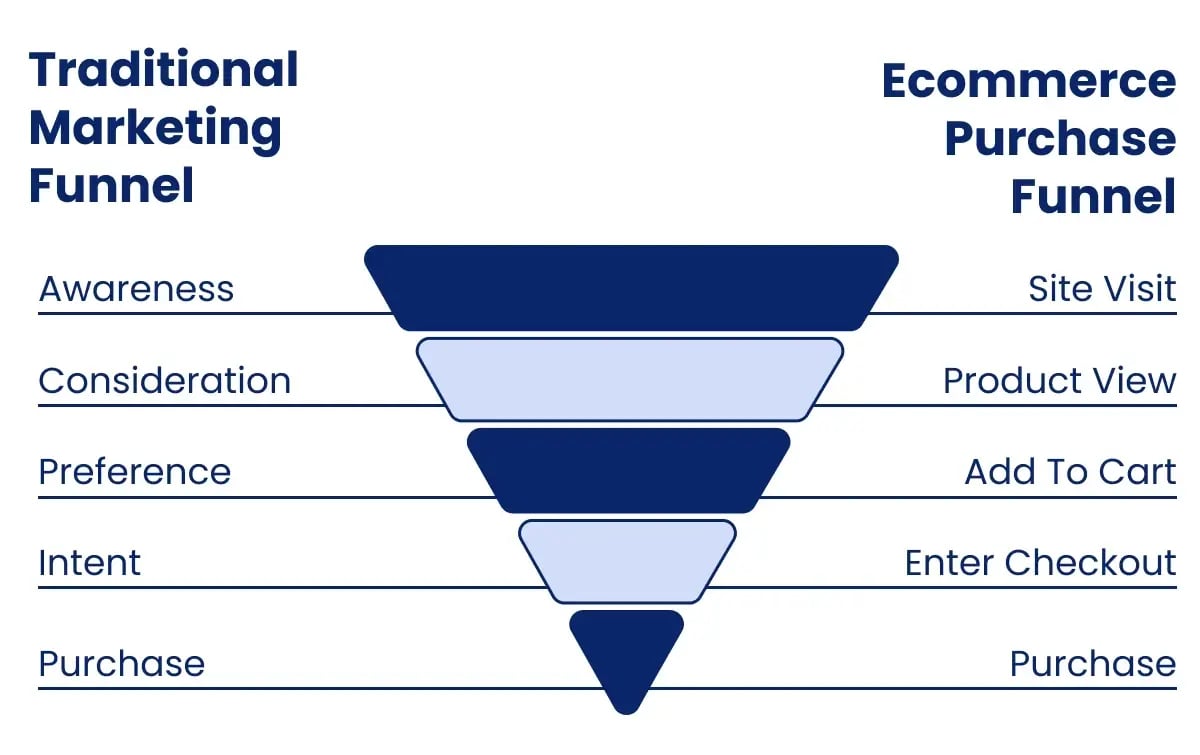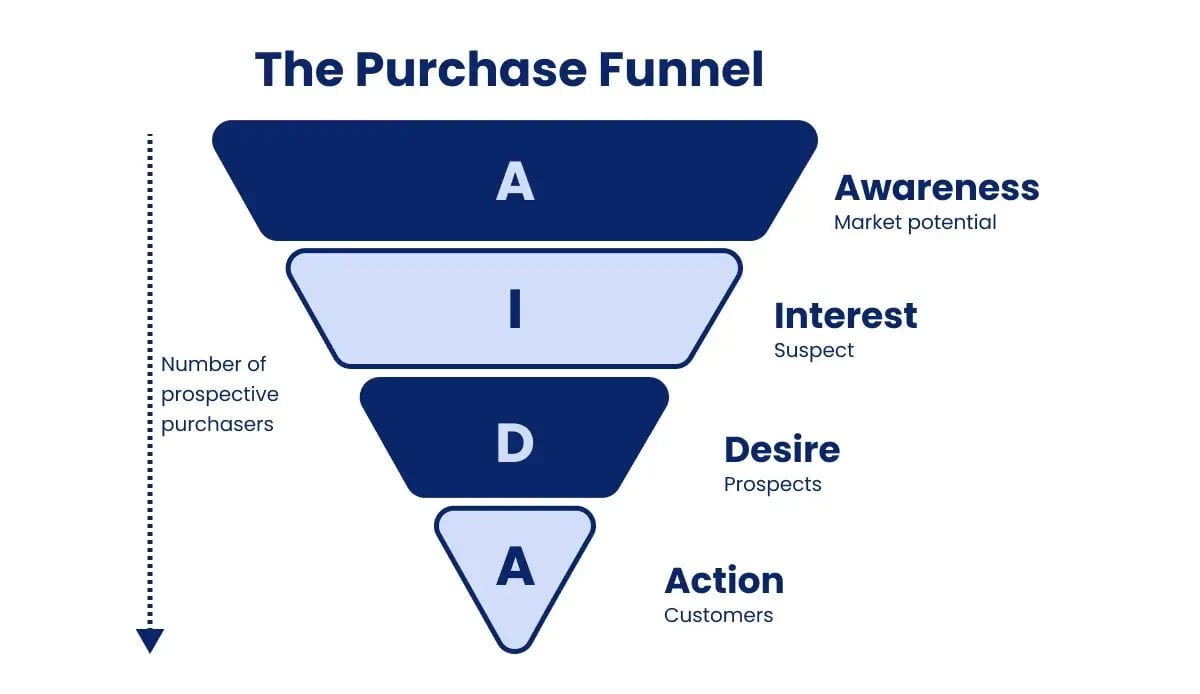Ecommerce conversion optimization focuses on increasing the percentage of visitors to your site who complete a purchase. In this article, we’ll share ten actionable strategies to help you enhance your conversion rates and boost sales.
Expect to learn about essential optimization techniques, from refining product pages to streamlining your checkout process for eCommerce businesses.
Key Takeaways
-
Optimize your eCommerce site with data-driven strategies to enhance user experience and online store boost sales.
-
Set realistic conversion rate goals for sustainable growth and use A/B testing to refine your optimization strategies.
-
Leverage personalization and trust signals, such as customer reviews, to build confidence and encourage purchases.
Understanding Ecommerce Conversion Optimization

Optimizing conversions for eCommerce involves refining the user experience on eCommerce platforms and online stores to heighten the number of successful transactions and uplift conversion rates specific to an eCommerce environment. The role of a business owner in this domain is critical as they aim to amplify sales figures by creating a more immersive shopping experience, employing tactics centered around boosting the performance of their digital store through strategic adjustment.
Conversion Rate Optimization (CRO) sits at the core, with its essence being informed adjustments rooted in empirical evidence. By delving into audience insights and iteratively modifying website aspects—from individual product displays down to streamlining the payment process—the intention is clear: streamline consumer engagement paths while elevating pleasure throughout their online journey.
Encouraging users towards taking intended steps such as making purchases or subscribing—fundamentally influenced by striking visuals, compelling copywriting, and astutely situated CTAs—is pivotal within CRO efforts for any e-commerce venture. partnering with an eCommerce agency to monitor these action-triggering moments provides clarity regarding which tactics resonate most effectively with consumers’ progression across your platform’s touch points.
For additional guidance on fine-tuning these mechanisms, referential materials and cro tools like our specialized guide on eCommerce CRO are available alongside assorted analytical tools designed specifically for optimizing conversion procedures.
Ecommerce entities can progress their optimization processes using diverse techniques from split testing different page variations—to extracting qualitative feedback via user experiences—and charting navigation patterns observed among site visitors.
These approaches offer profound understanding concerning customer preferences that directly informs tactical decisions ultimately propelling enhanced outcomes—as continuous evolutionary tweaks aligned with consumer demands pave way toward appreciable improvements within commercial transaction ratios online.
Calculating Your Ecommerce Conversion Rate

To commence with conversion rate optimization, it is essential to determine your current performance. To calculate the average conversion rate for your site, simply take the number of successful conversions and divide by the total visitor count. Then multiply that result by 100. This formula delivers a clear metric on how effectively your website is converting visitors into buyers.
It’s important to refine this calculation by omitting irrelevant traffic—for instance, visitors who land on a non-product-related blog post should not factor into the equation. Utilizing tools such as Google Analytics can facilitate excluding unrelated visits from calculations while offering comprehensive tracking capabilities. Ongoing observation allows you to discern patterns and base improvements on concrete data for enhancing your eCommerce platform.
Consider measuring different kinds of conversions separately in order to craft more tailored conversion rate optimization strategies—distinctly track newsletter sign-up rates versus actual product sales figures, for example. Such detailed analysis enables identification of specific areas needing work on the purchase process and devising targeted approaches to overcome particular obstacles within those areas.
In essence, accurately assessing and understanding eCommerce conversion rates sets up a solid groundwork upon which successful optimization efforts can be built.
Setting Realistic Conversion Rate Goals
Establishing achievable goals for conversion rates is essential for ongoing improvement and the sustainable expansion of your business. As reported in November 2023, the average eCommerce conversion rate was about 2.27%. It’s vital to aim for incremental progress rather than abrupt increases.
A reasonable initial target for a digital retail store’s e commerce conversion rates might be set at approximately 3%. Paying attention to these rates aids in sharpening strategies that lead to better performance and contribute to achieving an impressive eCommerce conversion rate.
Set your sights on practical and reachable targets when it comes to your conversion rate objectives. Setting overly ambitious goals can cause discouragement and exhaustion, while attainable aspirations encourage motivation and continual advancement. For example, aiming for a macro-conversion increase of 5% over half a year represents an approach that permits gradual improvements building momentum as time progresses.
Even minor modifications have the potential to yield considerable boosts in revenue. Adjusting small details such as button hues or phraseology on banners may unexpectedly influence eCommerce conversions significantly. Emphasizing continuous optimization efforts is crucial since it leads directly towards higher investment returns via increased sales figures—making regular tweaks assists in steadily raising conversions alongside enhancing overall e-commerce performance metrics.
Employment of A/B testing acts as an indispensable technique allowing choices rooted firmly within empirical evidence instead of conjecture—a strategy like this helps pinpoint which tactics most effectively elevate conversation numbers.Utilization of data-guided practices aligned with clear-cut aims guarantees both efficient execution plus enduring enhancement across optimization initiatives.
Key Metrics Influencing Ecommerce Conversions

Grasping the pivotal metrics that sway eCommerce site conversions is crucial for refinement. The bounce rate, which reflects the share of visitors who leave after seeing just a single page, stands out as an essential indicator. A heightened bounce rate points to inadequate visitor retention and suggests issues with capturing their interest, with desktop shoppers exhibiting an average bounce rate near 35%.
The exit rate is also vital, tallying the proportion of users leaving from a particular page. Elevated exit rates can highlight pages in need of specific improvements—for instance, when a product page displays a high exit rate. It may reveal deficiencies in information or other deterrents that repel potential customers.
Click-through rates (CTR) signify how often links to your website are clicked within ads or emails. Amplifying CTR aids in boosting traffic to your website and thus has positive repercussions on conversion rates. Observing the mean duration spent by users on your site sheds light on user engagement intensity and navigation efficiency—a typical visit lasts about 3.49 minutes.
Lastly, but important, is tracking the usual count of pages perused during each session. This metric offers insights into content involvement and navigational ease across your site—enhancing these statistics could resultantly advance overall eCommerce conversion performance levels substantially.
Maintaining vigilance over these decisive indicators enables strategic decision-making to fortify outcomes and amplify eCommerce conversions effectively.
Optimizing Product Pages for Conversions
Optimizing the product pages of your eCommerce site is essential for improving conversion rates. The use of high-quality images is crucial in allowing customers to fully visualize what they’re considering buying. High-resolution and lifestyle images that place products within real-world contexts can enhance their attractiveness, thus potentially raising the likelihood of an eCommerce conversion.
Elaborate and detailed product descriptions are just as critical, encompassing all necessary information such as materials used, instructions for usage, and size specifications. Incorporating details about construction quality, fit, or any unique features can build consumer trust. Integrating product videos may considerably heighten purchase intent by 120.5% while promoting prolonged engagement with your website.
In terms of customer reviews on both product and landing pages, showcasing these insights — particularly ones related to sizing or comfort — supports prospective buyers’ decision-making processes. CTAs need to stand out clearly without being overwhelmed by other page content. This ensures that users are guided smoothly towards making a purchase. By honing in on these components, you will craft web pages designed not only to attract visitors but also adept at converting them into patrons.
Ensuring that the imagery dynamically corresponds with various product options aids consumers in selecting confidently which variant best suits their needs., A streamlined experience laden with informative elements has been shown to greatly influence overall e-commerce conversion rates. Through enhancing your production pages with stellar visuals, crisp copy, authentic reviews, and clear calls-to-action, significant uplifts ind commerce conversions should be attainable.
Streamlining the Checkout Process
Optimizing the checkout experience is key to turning potential shoppers into actual customers. By implementing conversion rate optimization strategies, which improve user interaction by streamlining site navigation and simplifying the buying process, you enhance overall usability. Reducing the number of fields in a checkout form can lead to a more straightforward and less irritating customer experience.
Making the path toward finalizing purchases smoother can notably lower instances where carts are abandoned. It’s vital that checkout pages load quickly. Otherwise, sluggish performance could result in lost sales due to impatience from customers. Providing an option for guest checkouts also helps eliminate obstacles and improves satisfaction throughout their purchasing path.
Incorporating elements such as security badges and transparent privacy statements plays a significant role in fostering trust with consumers during their eCommerce transactions. Checkout forms become easier when restricted input options are used along with field formatting techniques—like limiting what users can enter into specific text boxes—and eliminating non-essential fields like redundant email entry slots may substantially increase conversion rates.
Refine how your checkout page operates not only diminishes cart abandonment, but also propels eCommerce conversion levels upward.
Personalization Techniques to Boost Conversions
Utilizing personalization within e-commerce serves as an influential mechanism to amplify engagement and escalate sales among online shoppers. By recognizing customers on a personal level and customizing their experience when shopping online, eCommerce brands can witness a substantial surge in conversion rates. Providing product suggestions that are informed by the user’s browsing habits has been shown to elevate purchase likelihood by up to 45%.
By tailoring product recommendations according to previous purchases, brands not only foster repeat patronage but also solidify customer loyalty and augment the average order value from their target audience. Adapting email capture forms using insights derived from customer data during account creation can greatly improve conversion rates.
Embedding personalization throughout every phase of the customer journey is pivotal for refining the overall customer experience. Employing strategies of personalization leads to a more compelling and satisfying interaction with an eCommerce platform, thereby enhancing the potential for increased conversions.
Leveraging Social Proof and Trust Signals

Implementing elements of social proof such as client endorsements and appraisals can foster trust and credibility among prospective customers and existing customers , which in turn motivates them to make purchases. These customer testimonials and evaluations are instrumental in bolstering consumer assurance.
Leveraging social media platforms for gathering consumer feedback has the potential to magnify the impact of social proof, thereby strengthening confidence in your brand. Reviews from customers serve as indicators of a business’s legitimacy and successful track record, swaying consumers’ buying choices. Optimism about purchasing is often heightened by favorable critiques and personal recommendations.
Assurance markers like secure transaction badges and transparent privacy terms help soothe any worries shoppers may have regarding the security of their online dealings. Showcasing well-known assurance symbols such as safety certifications can elevate perceived security during financial transactions.
Utilizing both forms of endorsement—social validation through customer experiences alongside visible assurances on transactional integrity—fosters greater trustworthiness and certainty among clients, ultimately translating into improved rates at which browsing individuals convert into actual purchasers.
Mobile Optimization for Higher Conversions
With over 5 billion mobile users and website visitors worldwide, optimizing for mobile devices is crucial for capturing conversions. Mobile-first design ensures your eCommerce site performs well on a mobile device, matching desktop performance.
Optimizing eCommerce stores for mobile devices prevents users from bouncing to other search results. The loading speed of a mobile eCommerce site significantly impacts user retention and conversion. Website speed can boost mobile conversion rates by as much as 36%.
Implementing auto-fill on forms can lead to a 30% faster completion time for customers. Using sticky navigation enhances user experience by ensuring easy access to main features. Simplifying navigation, enlarging buttons, and reducing text are strategies that enhance the mobile visitor experience.
Optimizing for mobile allows you to capture a larger share of the growing mobile commerce market and boost your conversion rates.
Continuous A/B Testing for Incremental Improvements
A/B testing serves as a method for evaluating two distinct versions of content to determine which one yields better performance. This technique is employed in conversion rate optimization with the aim to identify impactful alterations and highlight potential areas needing enhancement. Despite its slow pace and considerable demands, A/B testing stands crucial for informed decision-making. Conducting these tests without a strategic approach could result in unreliable outcomes.
The practice of iterative testing holds significance since it allows websites to evolve based on user interactions, leading to enhanced conversion rates. Regular application of A/B testing is advocated as a means to advance website conversions consistently. It’s important that before initiating any split tests, there should be a solid hypothesis grounded in data analysis along with an ample volume of site traffic necessary for garnering statistically significant findings. Establishing a definitive framework for running A/B tests guarantees systematic and productive experimentation.
Through examining varying marketing communications, businesses have the opportunity to craft campaigns more effectively resonant with their target audience. The scope of A/B testing may encompass multiple aspects such as call-to-action buttons, promotional banners or imagery, background visuals or colors on web pages, plus email campaign subject lines among others. Typically altering just one variable at once during split-testing processes helps simplify interpretations.
It’s pertinent not only in optimizing sales, but can be applied across different kinds of conversion goals—always aiming towards incremental enhancements via continual evaluations through cycles lasting over time—ultimately striving towards achieving elevated overall conversion rates.
Summary

Enhancing your eCommerce business’s conversion rates requires a comprehensive approach that encompasses getting to know your audience well, establishing attainable objectives, and persistently refining your tactics.
Concentrating on essential performance indicators, honing product pages for maximum impact, simplifying the checkout experience, using tailored content and strategies effectively while embedding elements of social proof and credibility markers can lead to substantial increases in eCommerce conversions and improve conversion rate optimization .
Ensuring mobile responsiveness along with relentless A/B testing plays an instrumental role in seizing a more extensive segment of consumers and making choices informed by solid data. By adopting these methods diligently and dedicating yourself to ongoing enhancements within your strategy framework will pave the way for sustained growth in your e-commerce enterprise.
Frequently Asked Questions
How do I calculate my eCommerce conversion rate?
To calculate your eCommerce conversion rate, simply divide the number of conversions by the total number of visitors and multiply by 100. Partnering with niche Shopify Plus eCommerce agency is the best way for Shopify users to maximize Shopify conversion optimization
This will give you the percentage of visitors who made a purchase, empowering you to track your success!
What is a realistic conversion rate goal for an eCommerce site?
A realistic conversion rate goal for your eCommerce site is about 3%, and you should aim for a 5% increase over the next six months.
Let’s strive to achieve that goal together!
What are key metrics that influence eCommerce conversions?
Focusing on key metrics like bounce rate, click-through rate, and average time spent on your site can significantly enhance your eCommerce conversions.
Track these metrics to create a more engaging experience for your customers!
How can I optimize my product pages for better conversions?
To enhance the likelihood of converting visitors into customers, it’s crucial to leverage detailed product descriptions complemented by high-quality images and highlighted customer reviews, all tied together with compelling calls to action.
Working with eCommerce agencies to incorporate these components can greatly improve the appeal and functionality of your product pages!
Why is mobile optimization important for eCommerce conversions?
Mobile optimization is essential for achieving a good eCommerce conversion rate as it caters to over 5 billion mobile users, ensuring they have a seamless shopping experience and don’t abandon their carts for competitors.
Embrace mobile optimization to boost your sales and keep your customers engaged!
